
Cornus, decorative wood young plants: plant and prune
Contents
The decorative dogwood in a nutshell
- Its bright branches, red, yellow or orange are essential in winter!
- With exemplary hardiness, never sick, it grows quickly and everywhere.
- Decorative for its foliage and bark, it is ideal in borders, in free or trimmed hedges, paired with small bushes or grasses.
- The white, blood or stoloniferous dogwood enlivens the garden throughout the 4 seasons.
- Pruning with pruning shears or shears is necessary to maintain well-coloured wood.
A word from our expert
With fresh or vibrant colours in spring and autumn, a subtle flowering followed by decorative fruits, and brightly coloured branches in winter, the Dogwood or Cornus is the ornamental bush for all four seasons. Its upright appearance and moderate size allow for numerous uses in a garden, whether contemporary or more wild.
Cornus is not just a village in Aveyron; it is primarily a highly decorative bush! Whether planted as a solitary specimen, in a hedge, or in a border, this very hardy bush will reveal its splendour throughout the seasons.
The white, blood, or stoloniferous dogwoods shine in all their glory when winter arrives. Their bare branches showcase their thin bark, which is vividly coloured in bright red or mahogany, orange, yellow, or green depending on the species. Their wood catches the frost and the slightest light in winter, standing out in the vegetation, even more so under the snow.
Decorative bark dogwoods are among the easiest shrubs to grow in the garden! Accommodating and very easy to cultivate, they thrive in full sun or partial shade and can adapt to both moist and dry soils. They even appreciate limestone. They also do wonderfully by the water’s edge. Prune them regularly to maintain beautiful, always colourful branches.
Graphical and flexible, their stems are also valued for making bouquets and Ikebana arrangements.
Botany
Botanical data
- Latin name Cornus
- Family Cornaceae
- Common name Bloodtwig dogwood, White dogwood, Tartarian dogwood
- Flowering from May to June
- Height 2 to 3 m
- Exposure sun or partial shade
- Soil type All
- Hardiness -20° to -25°
Cornus, or dogwoods, are frequently found in the wild in humid broadleaf and coniferous forests, meadows, wooded areas, and at altitude on rocky slopes, under harsh and contrasting climates that demonstrate their hardiness. Native to a large part of Europe and western Asia, the genus Cornus comprises around 45 species of bushes and small trees. Among them are the ornamental dogwoods cultivated for their colourful winter stems: Cornus alba, Cornus sericea, Cornus sanguinea, and Cornus stolonifera. They are also often found near water: some species tolerate very wet soils.
These very hardy shrubs have a bushy, ample, and upright habit, as wide as they are tall. Up to 3 m, but often less than 2 m if the shrub is pruned short every year.
Fast-growing but of modest stature, around 1.50 to 2 m in spread, dogwoods can nevertheless reach 3 m in 5 to 7 years if no pruning is carried out.
They are vigorous species, some of which have lower branches that form suckers or root in the ground, without the shrub becoming invasive. Ethey can quickly form dense thickets. However, the species with decorative winter shoots are not allowed to spread: they are generally cut back each year to ensure brightly coloured wood because, only the new shoots of the year are coloured, as they age, they take on a classic brown colour and lose their charm. Thus coppiced, the plant will maintain a compact size and continuously produce young coloured shoots.
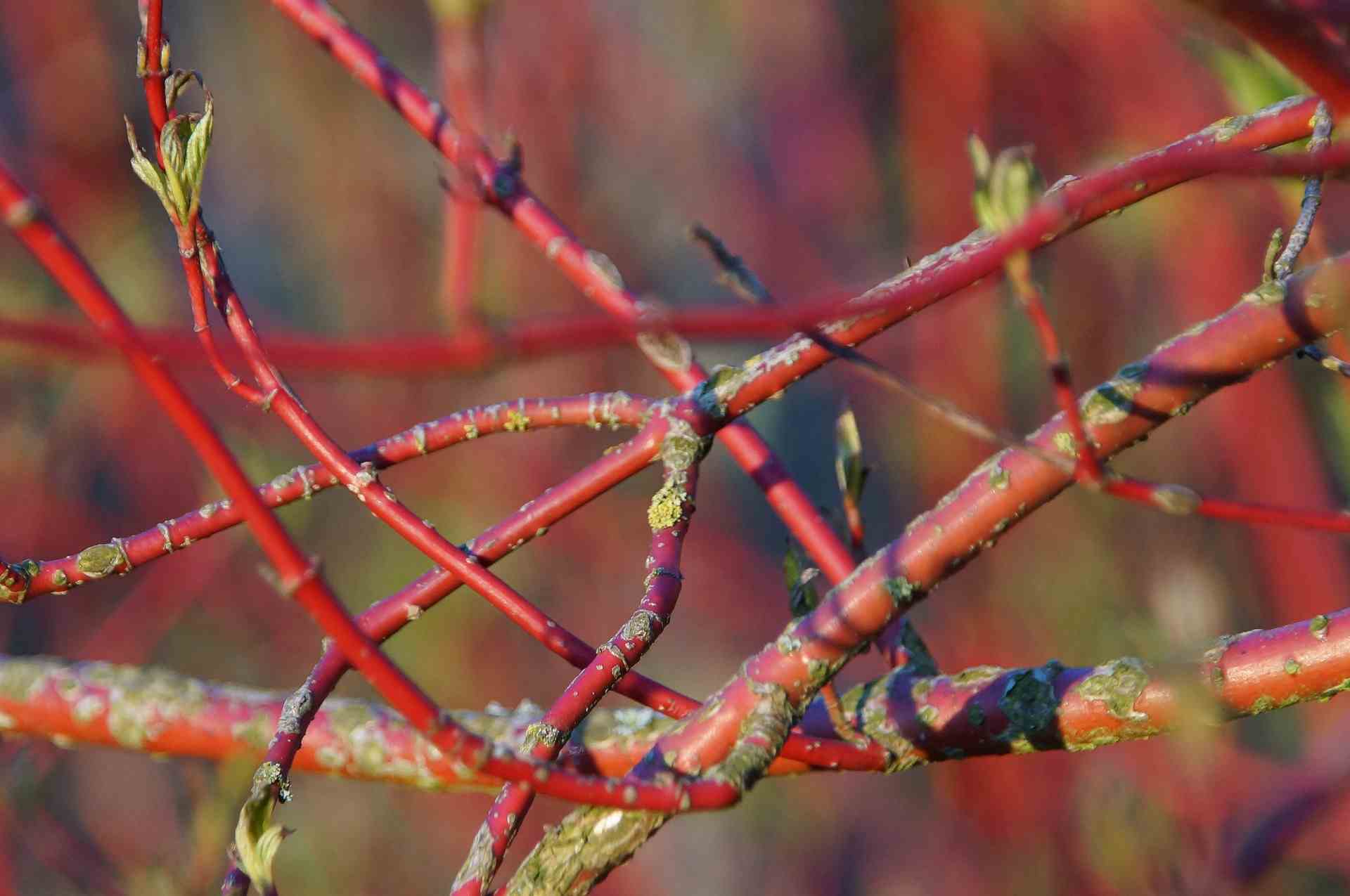
Cornus or dogwoods are very decorative shrubs in spring as well as in winter.
In spring, their base produces new stiff and flexible branches that rise up to 2 m high and spread into a bush (depending on pruning and branching) over 1.50 m. They bear numerous simple, opposite, ovate, and distinctly veined deciduous leaves. Light green, grey-green, or bright green, variegated with white, yellow, or pink depending on the cultivars, they turn red, purple, orange, or golden yellow in autumn before completely disappearing in mid-autumn.
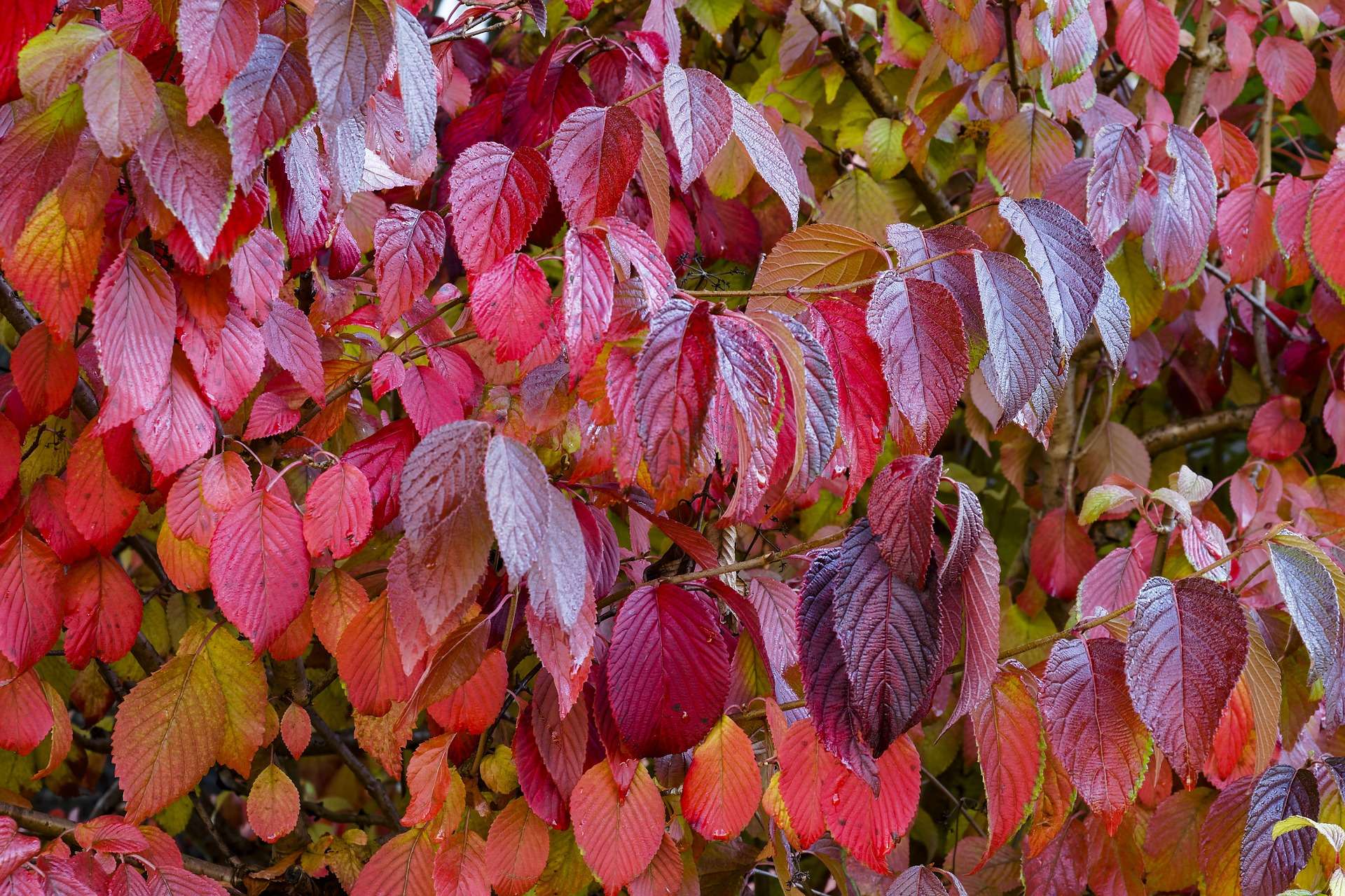
A flamboyant foliage in autumn
After this firework display in all shades of copper and purple, dogwoods shed their leaf adornment for winter. It is then that they astonish with the colour of their stems with red, yellow, or orange bark, spectacular throughout winter when everything is bare in the garden.
The flowering, insignificant, is not its main asset: it starts in May-June and ends in July. At the end of spring, small flowers bloom in flattened cymes, cream-white, 2 to 5 cm in diameter. They attract pollinators and contribute to the garden’s animation.
The flowers give way in autumn to clusters of berries (the dogwood or drupes) that are green, then red, and finally bluish-black. They resemble pearls or small olives that are highly appreciated by birds. Only those of the male dogwood (Cornus mas L), a large dogwood that does not belong to the genus with coloured wood, are edible. This fruiting complements the decorative interest of the shrub.
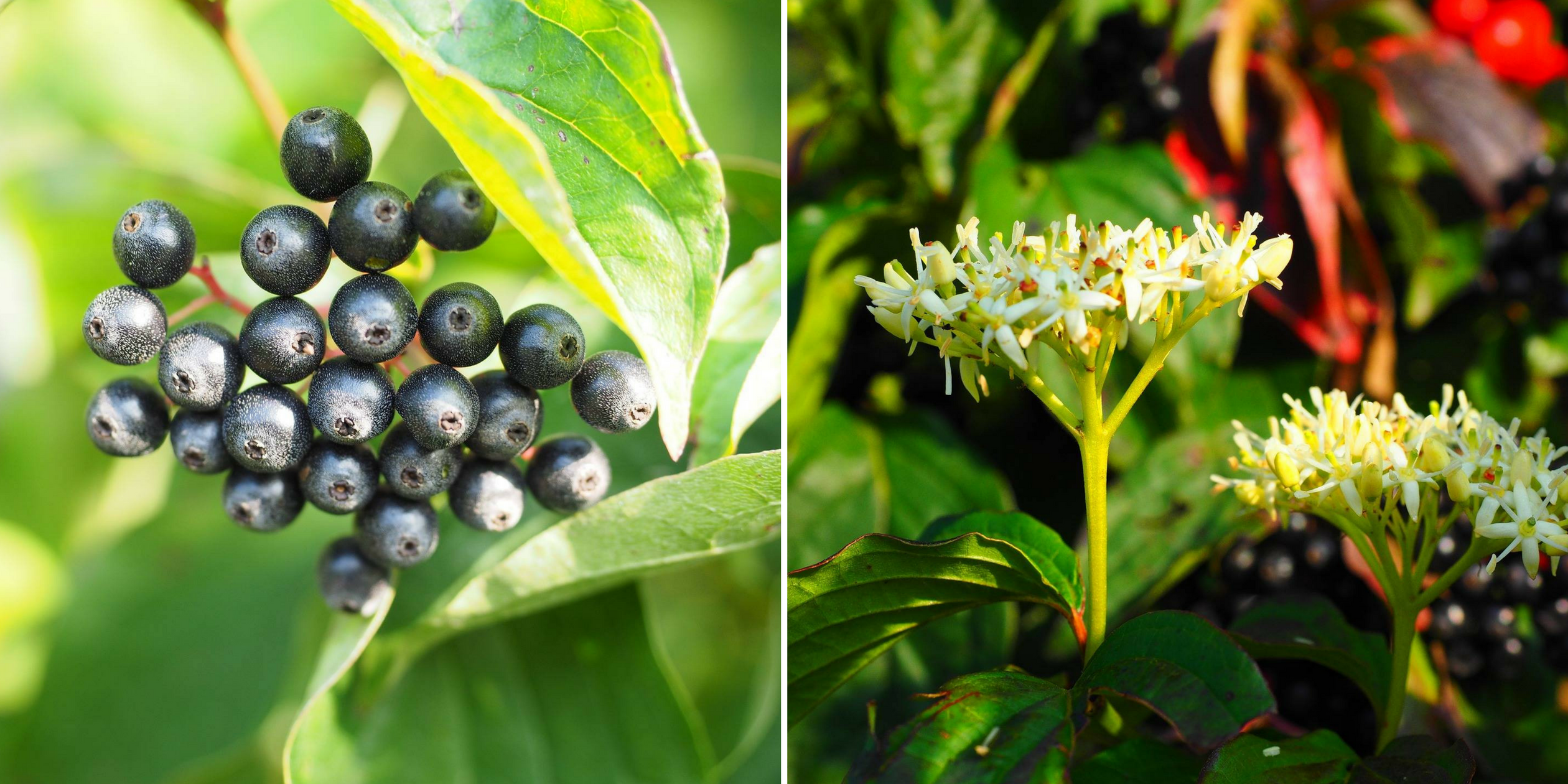
Very decorative berries.
Decorative wood dogwoods grow in all regions and under all non-scorching exposures, preferably in the sun or in partial shade under southern climates. Prefer cool locations, or with a “refreshing” shade provided by a hedge or a low wall. Although they are relatively tolerant of shade, their growth is seriously slowed down with too dense shading. The nature of the soil is of little importance, they thrive in all types of soil, acidic as well as calcareous. However, ensure good moisture conditions during hot and dry periods.
The wood, straight, strong but flexible is as hard as horn. It was once prized for making arrows and is still used in basketry, like osier willow.
Read also
Pruning cornus to maintain their coloursMain species and varieties
Varieties with decorative bark offer multiple benefits throughout the seasons. The main selection criteria are the colour of the branches in winter and the colour of the leaves in spring and autumn, sometimes the habit which can be more or less compact and bushy.
- The Cornus alba or white dogwoods
Native to Northern China and Siberia, the white dogwood exists in many particularly remarkable varieties. Easy to grow, this small bush is very vigorous with an upright and open habit, reaching 2 m in height, and grows quickly in all types of soil. It easily tolerates poorly drained soils and is therefore suitable for planting near water. In winter, all Cornus alba have red bark that can be very dark. The foliage varies depending on the varieties but all offer beautiful autumn hues. The small, flat cymes of yellowish-white flowers are not very noticeable and give way to white berries that will turn bluish by late summer. The colour of the wood varies according to the varieties: ‘Kesselringii’ with its almost black branches, Cornus alba ‘Baton Rouge®’ with its bright red wood that adapts to all well-drained soils, even dry, poor, stony, or calcareous, or the Cornus alba ‘Sibirica’ or Siberian dogwood, undoubtedly the most well-known and perhaps the most used of the varieties with bright red stems.
- The Cornus sanguinea (blood dogwood, female dogwood)
The type species of Cornus sanguinea, also known as “female dogwood” or even “Normandy olive”, is also appreciated for its autumn colours of coppery golden yellow. Like the white dogwoods, it displays exceptional branches after leaf fall. It is a bush with a wide and upright branching habit, reaching 1.80 to 2 m in height and 1.20 m in spread. At the end of summer, it bears small dark red fruits that become almost black in September. It has produced two exceptional cultivars: ‘Midwinter Fire’ with its bright orange-red branches, and ‘Winter Beauty’ (or ‘Winter Flame’) which has brighter red stems at the tips that have earned it the nickname “Cornus Fluo”.
- Cornus stolonifera or Cornus sericea
This species, native to North America, includes one of the most remarkable varieties for warming up the garden in the cold season. Originally, the species has red wood. Very cultivated, the Cornus sericea ‘Kelseyi‘, compact and creeping, forms a rounded and wide ground-covering bush that spreads over the years (2 m × 4 m high) with light green foliage that turns orange-yellow in autumn and yellow-green, red-brown branches at their tips. A fast-growing plant, it can become invasive, with branches easily rooting upon contact with the soil. It is widely used to adorn slopes and garden borders or to stabilise soil on inclines. Spectacular, the shoots of C. sericea ‘Flaviramea’ or ‘yellow wood dogwood’ are bright yellow-green in winter and offer a lovely contrast with red dogwoods.
Discover Olivier’s video on decorative wood dogwoods!

Cornus alba Baton Rouge - Red Dogwood
- Flowering time June, July
- Height at maturity 1,75 m
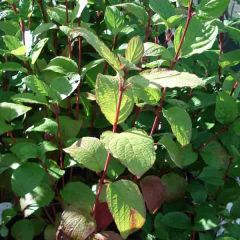
Cornus alba Kesselringii - White Dogwood
- Flowering time June, July
- Height at maturity 3 m
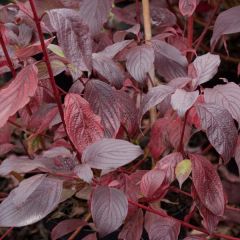
Cornus alba Siberian Pearls - White Dogwood
- Flowering time June, July
- Height at maturity 2 m

Cornus alba Sibirica Variegata - Variegated Dogwood
- Flowering time June, July
- Height at maturity 2,50 m
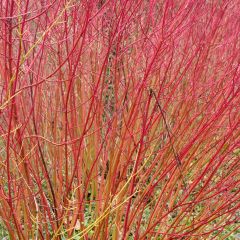
Cornus sanguinea Midwinter Fire - Common Dogwood
- Flowering time June, July
- Height at maturity 3 m
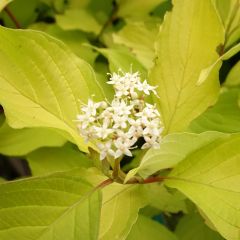
Cornus alba Aurea - White Dogwood
- Flowering time June, July
- Height at maturity 2 m
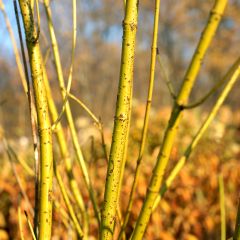
Cornus stolonifera Flaviramea - Stoloniferous Dogwood
- Flowering time June, July
- Height at maturity 2 m
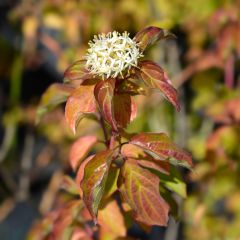
Cornus sanguinea Winter Beauty - Common Dogwood
- Flowering time June, July
- Height at maturity 2,50 m
Discover other Coloured wood Dogwood
View all →Available in 0 sizes
Available in 3 sizes
Available in 2 sizes
Available in 1 sizes
Available in 2 sizes
Available in 2 sizes
Available in 3 sizes
Available in 3 sizes
Available in 2 sizes
Available in 3 sizes
Young plantation
Where to plant the decorative bark dogwood?
Dogwoods are easy-to-grow bushes. Not demanding in terms of soil type and exposure, they can be planted in all regions of France. They thrive in heavy, clayey, moist soils, but also in more well-drained soils.
The nature of the soil is of little importance (sandy, loamy, and clayey) and can even be alkaline. This is an easy bush that succeeds in rich substrates. It is low-maintenance.
Dogwoods perform best in a location where they can capture low sunlight. The exposure can be slightly shaded, but full sunlight suits them well. The bloodtwig dogwood is relatively tolerant of shade, but its growth is slowed down with too dense shading. Prefer cool locations, or with a “refreshing” shade: mixed in a free or low hedge, at the back of large flower beds, at the edge of woodlands to create a transition with the countryside, or even at the edge of a low wall.
Wider than tall (1 to 2 m), place the dogwood in a free hedge, at the back of a perennial bed, or with other bushes, in association with evergreens with dark foliage, to highlight the colours of the leaves and stems.
Cornus alba and C. stolonifera accept heavy and very moist soils and are suitable for planting along riverbanks; the water reflects their colourful stems in winter.
Young plants must be watered abundantly during hot dry spells in summer. Dogwoods are very hardy and robust, tolerating temperatures below -20°C without any protection during winter.
Cultivation in pots or containers is possible, with a preference for a cultivar like ‘Kelseyi’ which is a good ground cover, on a terrace complemented by Skimmias, Heucheras, Achilleas, and Hydrangeas, while monitoring summer watering.
When to plant?
The bare-root varieties we offer, which allow for low-cost hedges, should be planted in autumn, from October to early December. The varieties delivered in pots can be planted all year round (excluding frost periods), although the ideal planting time remains autumn and late winter. The ideal period runs from mid-September to early December.
How to plant?
- When planting individually, maintain a distance equal to the height of the mature plant. In a mixed hedge with other bushes, space them only 1 m apart. Preferably plant in compact groups of 3 to 5 (1 per m²) to create a spectacular mass effect and do not hesitate to mix shades to enhance contrasts by associating them with evergreen foliage.
- Dig a hole in the ground twice the size of the root ball, as the root system of the dogwood requires space (at least 0.60 to 0.80 m in width and depth).
- Spread a layer of gravel at the bottom of the planting hole to ensure good drainage. Place the root ball in the hole.
- Backfill, taking care to leave the collar of the plant level with the soil.
- Firm the soil around the base of the bush.
- Create a watering basin: do not let the young plants be in overly dry soil!
- Water abundantly immediately after transplanting and for two to three weeks. Once the plants are well established (at least 2 years old), no watering is necessary, even during temporary dry spells.
Maintenance and pruning
Dogwoods offer perfect resistance to diseases and pests. There is not much to fear. It is mainly poor growing conditions that can lead to leaf scorch or root rot.
To obtain new coloured shoots each year, cut back old branches at the end of winter every year or every two years depending on the species (and from the first year of planting), close to the stump, more or less short depending on the desired shape, as the bark discolours as the wood ages.
Depending on the vigour, remove a good third of the branches, the largest and least coloured, without shortening the branches left in place. Pruning is not a problem as the growth of most Cornus is very rapid: cut to 30 cm from the ground if you want a very compact bush of 1 m in height or only 1/3 or even half of the branching to obtain a more voluminous bush.
Pruning also depends on the cultivar: C. alba ‘Kesselringii’ with slow growth will only be cut back every two or three years. Trim at a slight angle above an eye. Carry out the operation on each branch in the same way. Remove all dead wood at the base of the bush.
You can also completely shave this small bush; it will withstand it very well but will take 2 years to reform a beautiful clump. This practice prematurely ages the stump and also leaves an unsightly empty space: a pruning cycle of two years will encourage a more natural and flexible habit even if the colour of the branches will lose a bit of its brightness. Spread a thick layer of compost at the base of the plant to promote its regrowth.
For young plants, and at least for their first two winters, mulch in late autumn or before the first frosts. Fertiliser applications are not at all necessary. Leave the fallen leaves at the base of the bush, as they provide a natural mulch and help enrich the soil through their decomposition.
Do not let plants under 2 years old dry out. Once truly mature, no further maintenance is needed.
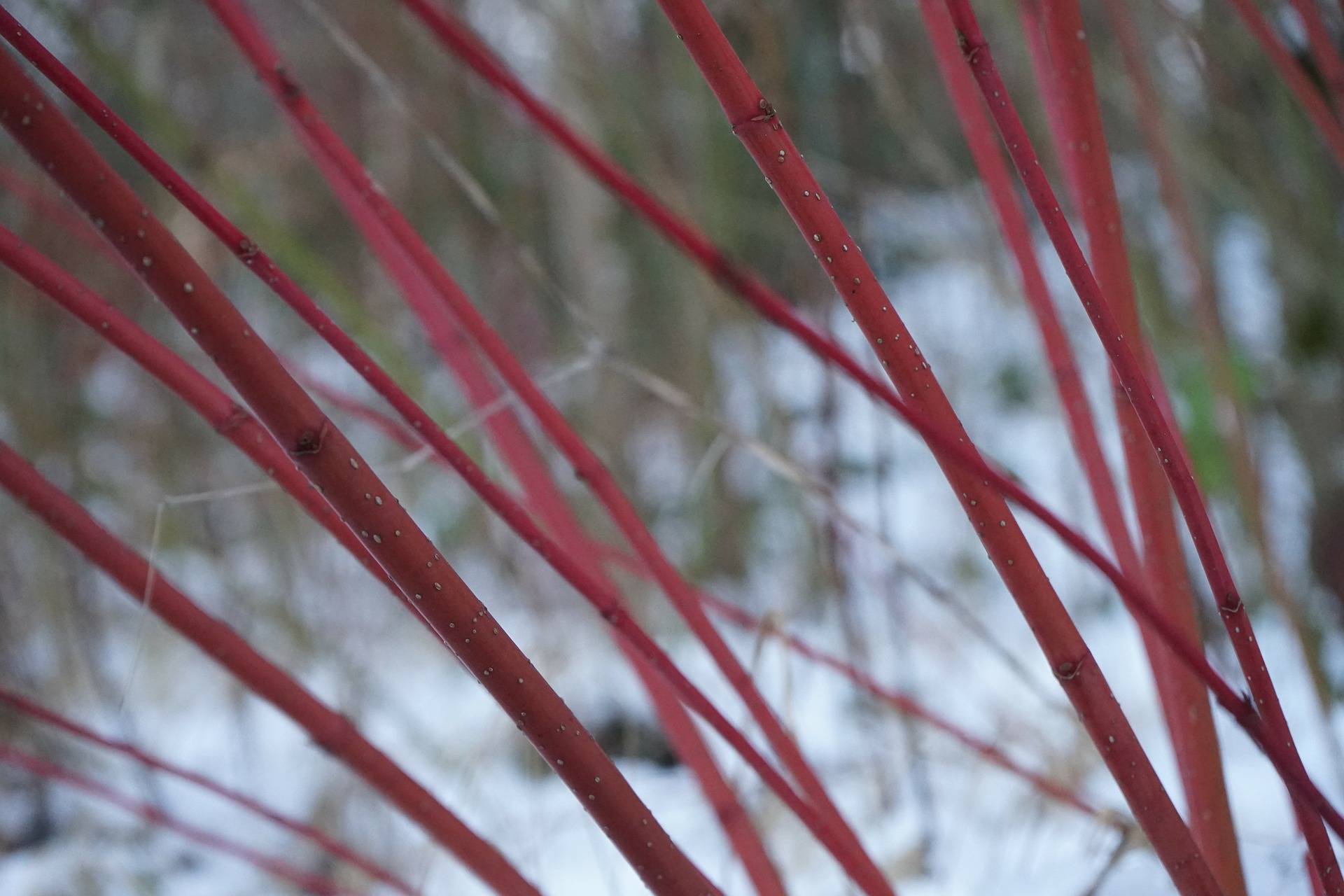 Pruning helps maintain beautiful coloured wood.
Pruning helps maintain beautiful coloured wood.
Multiplication
Sowing
The propagation of coloured stem dogwoods is easy by propagation by cuttings; sowing is not really recommended.
Layering
Particularly suited to woody plants (those with stems containing wood), layering will allow you to easily obtain, quickly and at low cost, young plants identical to the mother plant. This technique involves encouraging the appearance and then the development of roots on a portion of stem, temporarily buried, without detaching it from the mother plant. In spring or early summer, bury long low branches in a trench 40 cm deep until they root. Dogwood branches tend to root when in contact with soil. Separate them in autumn or the following spring and grow them in pots for a year before planting.
→ To learn more, read our tutorial: “How to multiply coloured wood dogwoods by layering?”
Propagation by Cuttings
Propagation by cuttings is a quick way to obtain many young plants of dogwoods from a single bush. The success rate is particularly high. For the propagation of dogwoods, the ideal method is semi-woody or semi-ripe cuttings taken in July-August:
- Take cuttings from lateral shoots that are semi-ripe (that is, stems that are in the process of transitioning from softwood to hardwood). At this stage of development, the rooting of the taken stems is better for the success of the cuttings.
- Insert the cuttings into a mixture of sand and turf and place them at a temperature of 15 to 18 °C.
- Repot in a mixture of soil and potting compost as soon as new leaves appear and winter them in a frost-free environment.
→ Learn more about the multiplication of dogwood in our tutorial!
Associate
Versatile, this bush adapts to all gardens, whether contemporary or more wild in style. The king of winter scenes, the dogwood pairs well with a multitude of plants. Whether used as a free or low hedge alongside various bushes, as a backdrop in a border with large grasses, variegated and evergreen plants, or in a container on a terrace, there will always be a dogwood to ensure a lovely decor throughout the seasons, regardless of the size and style of the garden. Planted in groups of the same variety, they will add a splash of colour to the back of the garden. In winter, the naked, colourful branches will serve as a backdrop for Hellebores and early bulbs or will stand out powerfully in grey and gold compositions. Don’t miss out on this bush that brightens up winter and discover our inspiring pairing ideas for placing it in your garden!
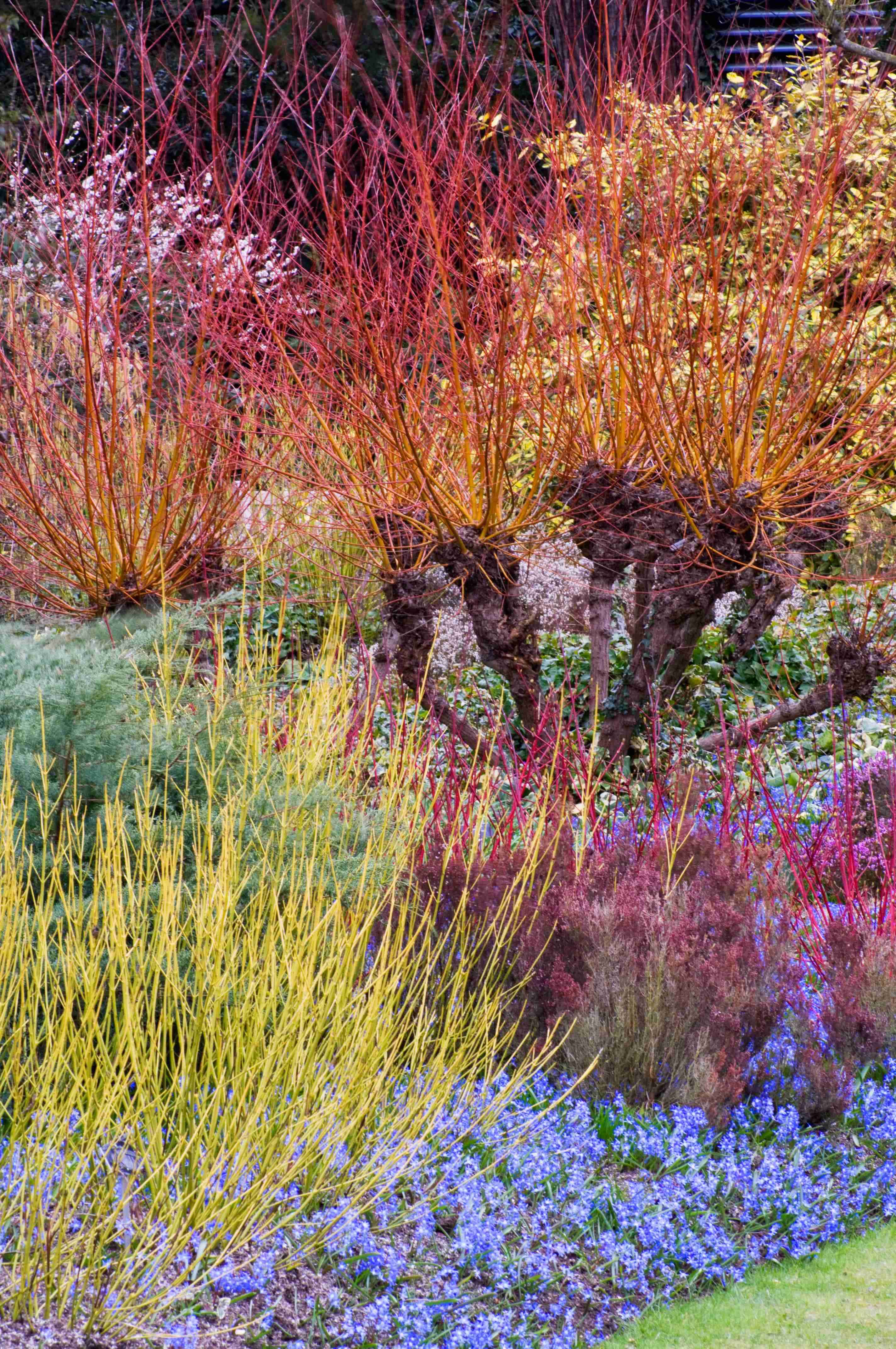
Discover more pairings in our advice sheet: “Decorative dogwoods – 9 successful pairing ideas”
To go further
- Our wide range of Cornus includes the best varieties, discover it in our online nursery,
- Read on the blog, Pierre’s article: “Baton Rouge, a dogwood that truly lives up to its name!”
- Olivier’s video: The Cornus
- Advice sheet: Decorative dogwoods: 9 successful pairing ideas
- Advice sheet: 12 decorative dogwoods: the most beautiful varieties
- Advice sheet: The most colourful decorative dogwoods
- Advice sheet: 10 dogwoods for a small garden
- Our article: A dogwood hedge
- Discover our video on the pruning of the decorative dogwood
- Subscribe!
- Contents































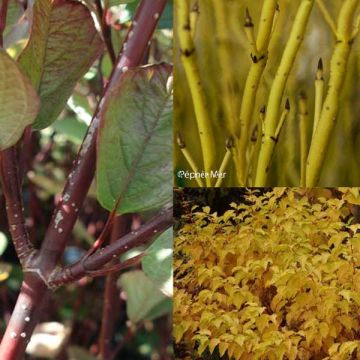
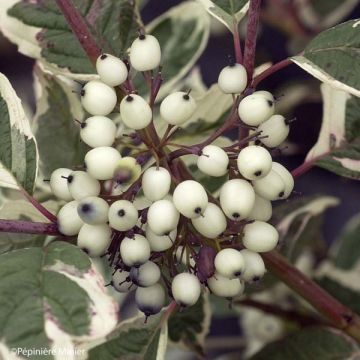
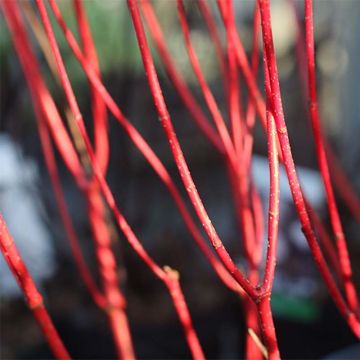
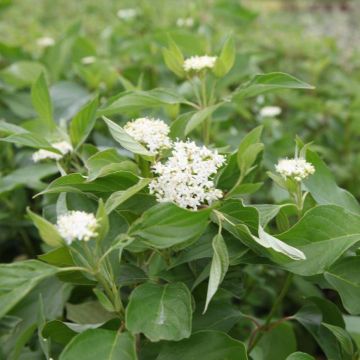


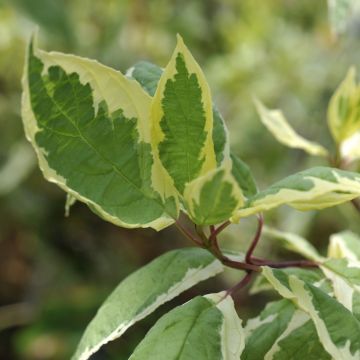
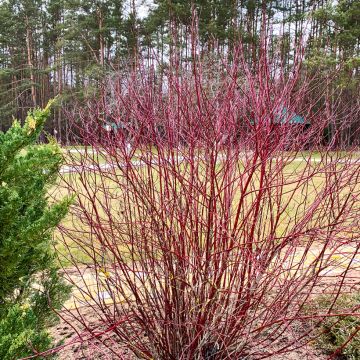


Comments